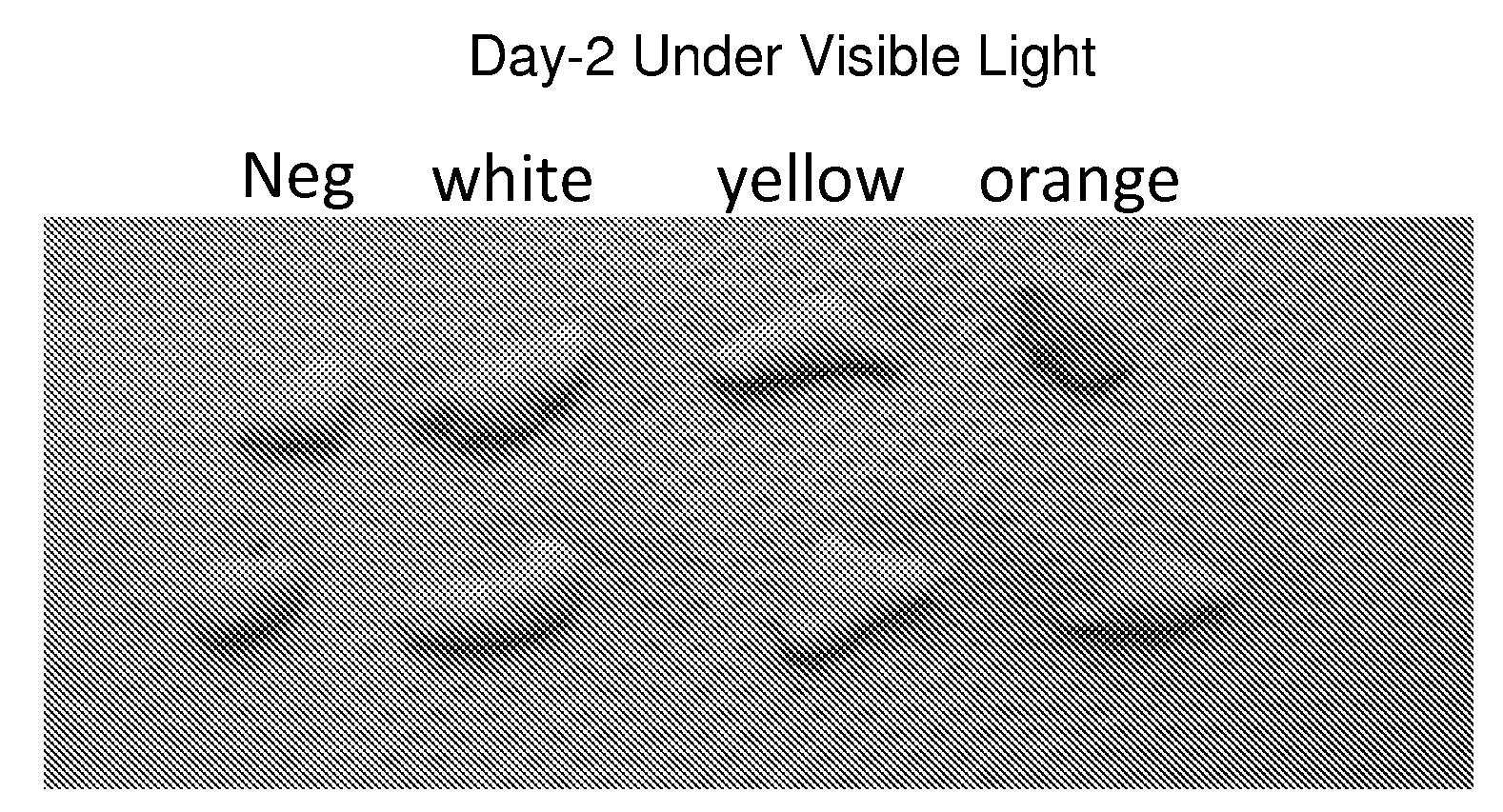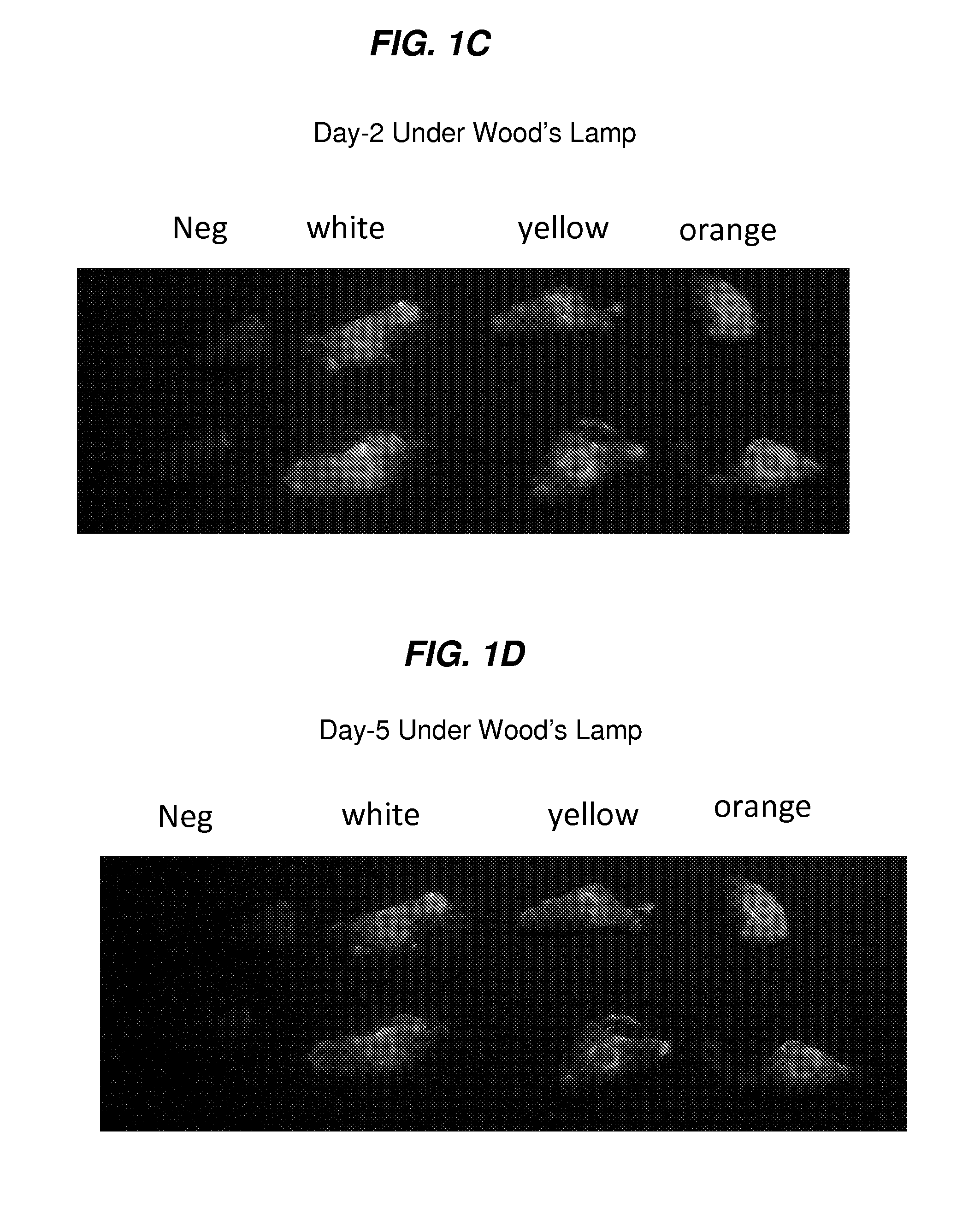Labeled skin lesion biopsy punch and uses thereof
a skin lesion and biopsy technology, applied in medical science, surgery, vaccination/ovulation diagnostics, etc., can solve the problems of imposing the requirement for additional biopsies, the possibility of performing the inability to perform surgery on the wrong area, so as to facilitate non-invasive and continued monitoring of the biopsy site, and achieve effective treatment strategies.
- Summary
- Abstract
- Description
- Claims
- Application Information
AI Technical Summary
Benefits of technology
Problems solved by technology
Method used
Image
Examples
example 1
[0218]In vitro study demonstrating fluorescence tattoo is invisible under normal light and visible under UV light after multiple washes.
[0219]Methods:
[0220]Human fetal foreskin is harvested, and the biocompatible dye, e.g., fluorescent tattoo deposited to each sample using a biopsy device, e.g., needle biopsy device, and the human fetal foreskin tissue was washed in a combination of media and alcohol and cultured in Transwell microplate. Each day the human fetal foreskin tissue samples were removed under the ventilated hood and was washed with both media and alcohol (to mimics daily skin care). The human fetal foreskin tissue samples were harvested on Day 5 following application of the dye and analyzed using histological staining.
[0221]The inventors used neonatal foreskin as an example of human skin. The inventors assessed the following: (a) ease of application and the feasibility of applying the tattoo, (b) the optimal protocol for the application of the fluorescent tattoo, (c) the...
example 2
[0226]In vivo study demonstrating fluorescence tattoo is invisible under normal light and visible under UV light for at least 6 months following.
[0227]The inventors demonstrated the use of the biopsy device and the system and methods as disclosed herein on a subject (23 year male) with basal cell nervus syndrome with a lesion in the middle of his back, which was suspected to be a recurrent basal cell carcinoma (BCC) with multiple LN2 and ED&C by FP (see FIG. 6A). The biopsy procedure was performed with a punch biopsy with the tissue cutting edge coated with a biocompatible dye, e.g., fluorescent dye. The dye was deposited at the exact location of the biopsy when the biopsy was performed, and was visible under UV light using Wood's lamp on the day of the biopsy (see FIG. 6B). The dye was not visible under normal white light. On the 3 month follow-up timepoint after the biopsy procedure, the subject was assessed and the location of the biopsy procedure was not visible under normal (wh...
PUM
 Login to View More
Login to View More Abstract
Description
Claims
Application Information
 Login to View More
Login to View More - R&D
- Intellectual Property
- Life Sciences
- Materials
- Tech Scout
- Unparalleled Data Quality
- Higher Quality Content
- 60% Fewer Hallucinations
Browse by: Latest US Patents, China's latest patents, Technical Efficacy Thesaurus, Application Domain, Technology Topic, Popular Technical Reports.
© 2025 PatSnap. All rights reserved.Legal|Privacy policy|Modern Slavery Act Transparency Statement|Sitemap|About US| Contact US: help@patsnap.com



